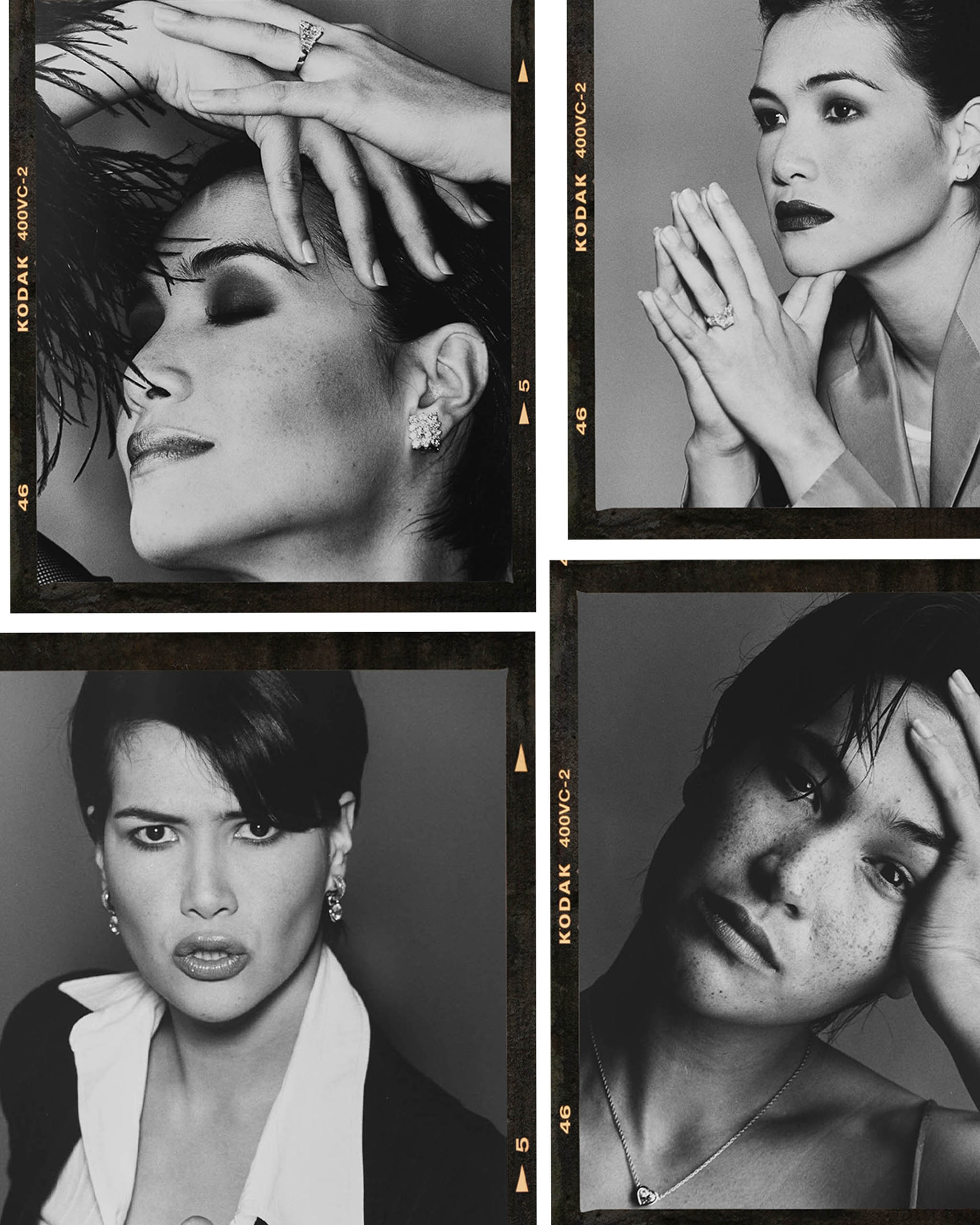Tina Maristela Ocampo in a campaign for De Beers, photographed by Neal Oshima. Digital archive photography by Kieran Punay, art by Makie Cruz
Model Tina Maristela Ocampo talks to Vogue Philippines about the magic of collaboration between herself, photographer Neal Oshima, and beauty architect Henri Calayag, as documented in archival photos.
For a De Beers campaign circa 1991, photographer Neal Oshima and stylist Henri Calayag captured every expression in model Tina Maristela Ocampo’s arsenal. There’s a magic to the photographs; beneath them was an undertone of the passion that went into their creation. It’s a kind of magic that could have only existed between herself, Neal, and Henri. “See, that was always what we shared [between] the three of us,” Tina says, giving a knowing smile. “There’s got to be fire, enough to burn the studio.”
In a two-hour-long conversation with Vogue Philippines, the former model reminisced about her past life as she went through her photo archive, gifted by her dear friend Neal. “Just when he was spring cleaning maybe 10 years ago, [he] was saying, ‘I have something for you,’” she recalls. “And I saw all these beautiful photos that he printed. He said, ‘They’re all yours.’ So I had them framed, and it’s such an incredible gift. I’m always thankful for that.”
That gift included two campaign series, one for the British jeweler De Beers and the other for Sari-Sari Store, a local multi-concept store that was then run by her husband, Ricco Ocampo. She calls the collection of photos for De Beers her “series of moods,” as Neal and Henri instructed her to act a different story in every shot. Today, Tina’s multifaceted expressions casually line the walls of her home office, where she can readily gaze at memories that came of a friendship and an innate fire.
Campaign for Sari-Sari Store, circa 1985 to 1987
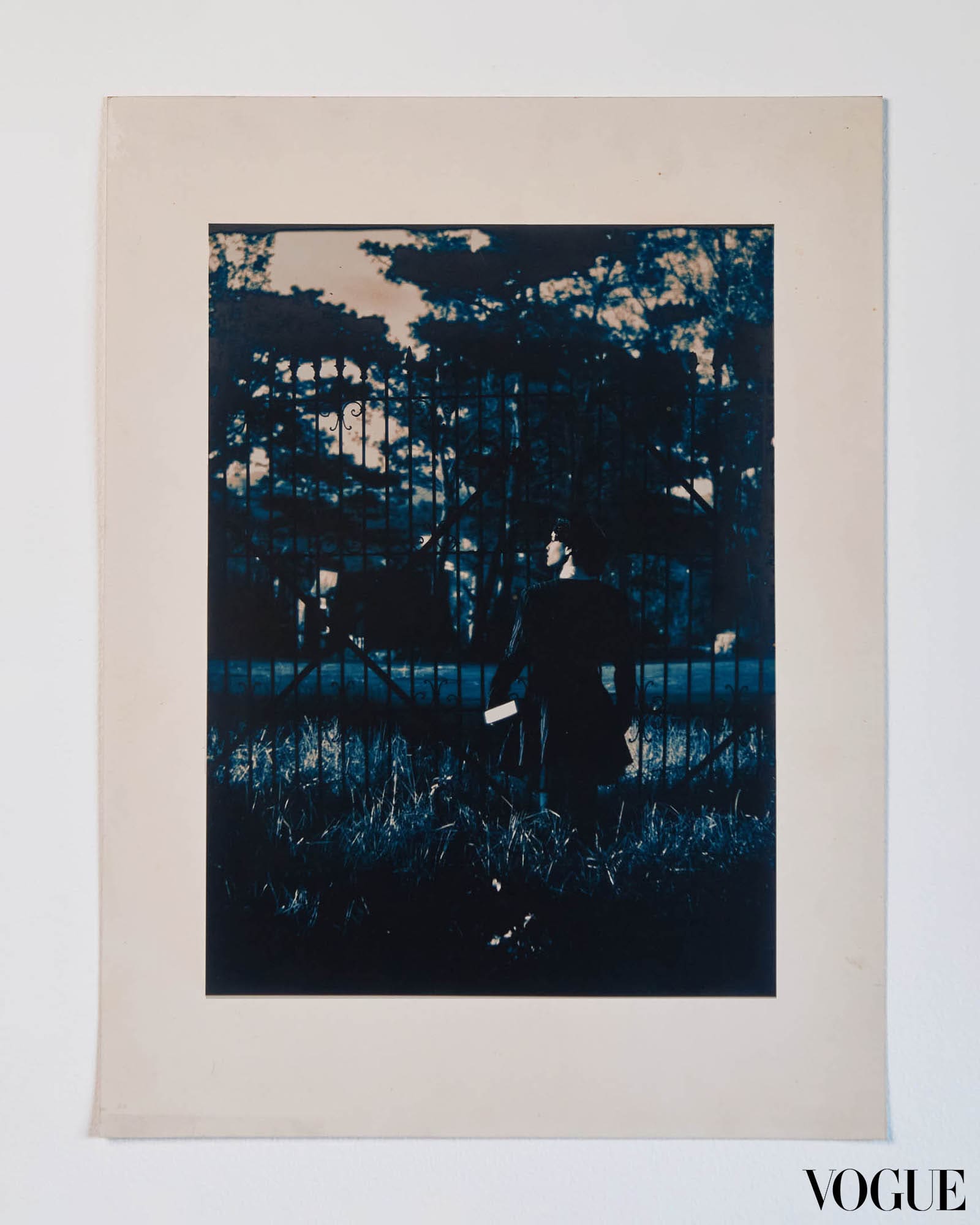
Tina was wearing pieces from Schizo, a label by designer Rafé Totengco that was exclusively sold at Sari-Sari Store. “This was way back before he even became a bag designer in New York. He was most probably twenty-something years old, and he was already a creative young boy.”
For their campaign, Sari-Sari Store followed Neal’s lead; he wanted to do the shoot in the north. “He wanted to shoot in this very haunted house in Baguio,” Tina recalls, laughing at the memory. She and one other model had a call time of 4 in the morning; they had to wait in the pitch black. This final photograph was taken as the first rays of light slipped past the trees, casting just enough light on Tina’s face.
“You see [that] the image is so eerie. It captured everything. The mood is there,” Tina says. When the beautiful blues in the image is pointed out, she is quick to tell Vogue, “Mind you, there was no guide, ha. [The camera was a] Hasselblad, and the only guide for us to know if [Neal] was hitting the right light was through a polaroid.” She continues, “And the polaroids would tell us whether we should extend the shoot, wrap it up, or get lost. We were at the mercy of the sun.”
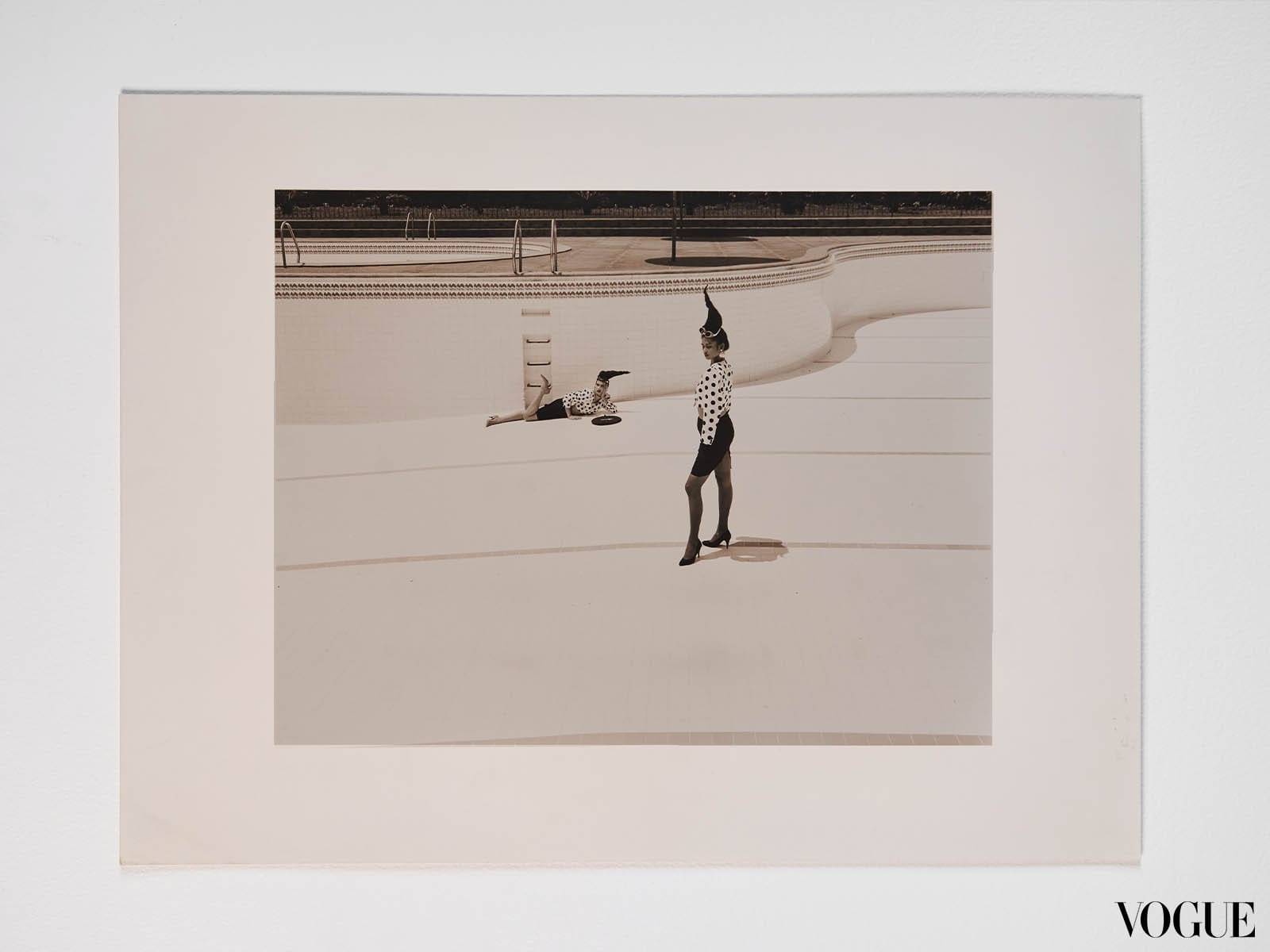
“This was in an empty swimming pool in Balara,” Tina says. She, along with model Issa Gonzales, wore Ingga, a label by the late designer Ernest Santiago and a “premiere line” at Sari-Sari Store. That day, “we started very early again,” says Tina, “because Neal wanted the sun to hit the pool. And so we were burning hot inside the pool while he was shooting.” He wanted the light to bounce back from the “whiteness of the tiles,” Tina says, the memory still clear as day. “He wanted to capture the lines of the pool.”
This image ended up being one of Sari-Sari Store’s most popular. Back then, their campaign images were emblazoned on their tags, boxes, shopping bags, and postcards. This one in particular, according to Tina, almost always sold out.
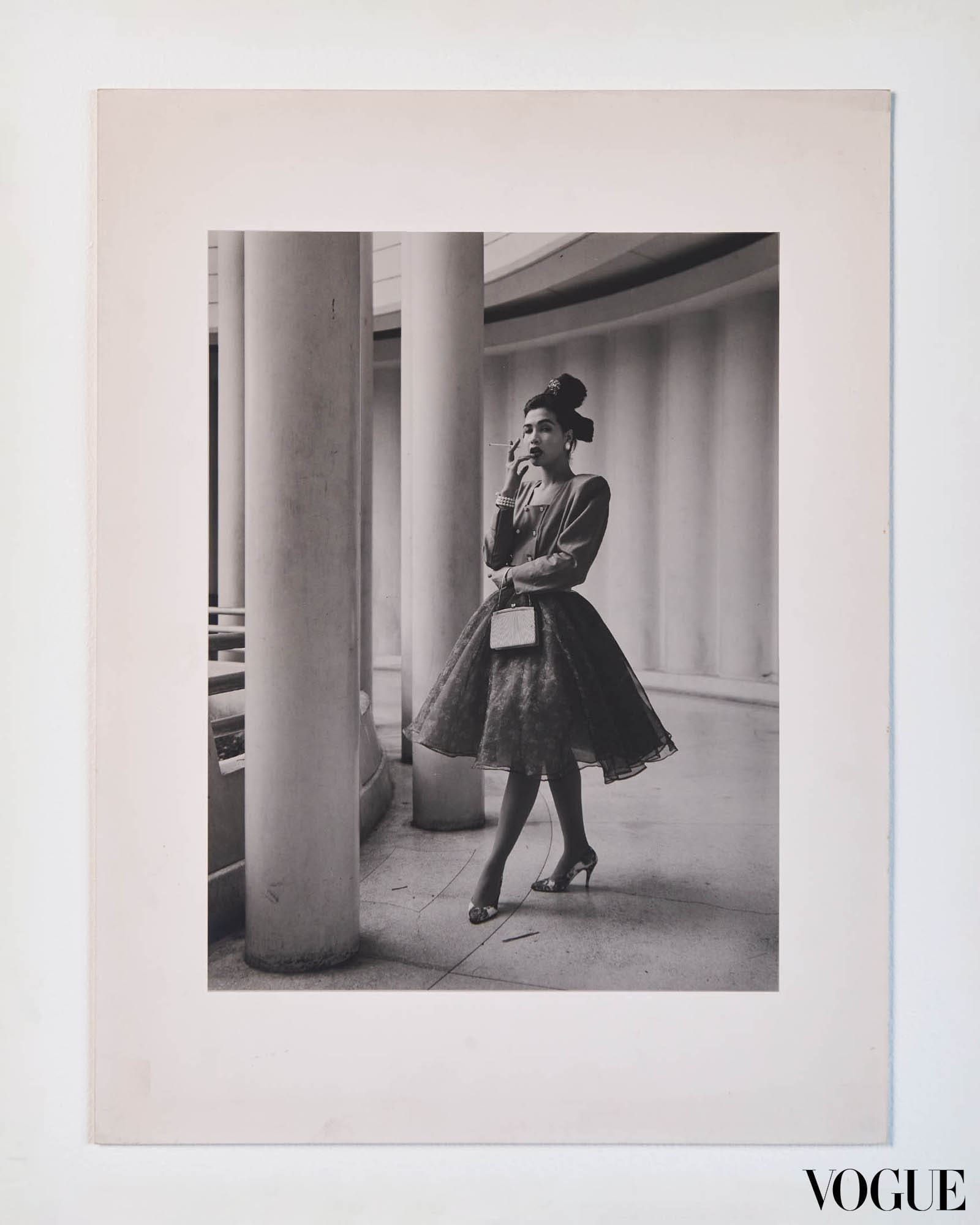
In another image taken in Balara, Tina, too, wears Ingga. “That dress is iconic because the label Ingga in Sari-Sari Store was the one that [would] dress Sharon Cuneta at her shows,” she says before joking, “I don’t know if you were alive [then], but she always had that pouf dress. When she danced and sang, she was always in a pouf dress. That was also an iconic Ingga look.”
Tina fondly looks back on this particular photo, with the larger campaign for Sari-Sari Store evoking memories of how she met her husband Ricco, then a new entrepreneur. “He made me the signature model for that [campaign] because, he claimed, he wanted to marry me,” she laughs, “which he did!”
Campaign for De Beers, circa 1991

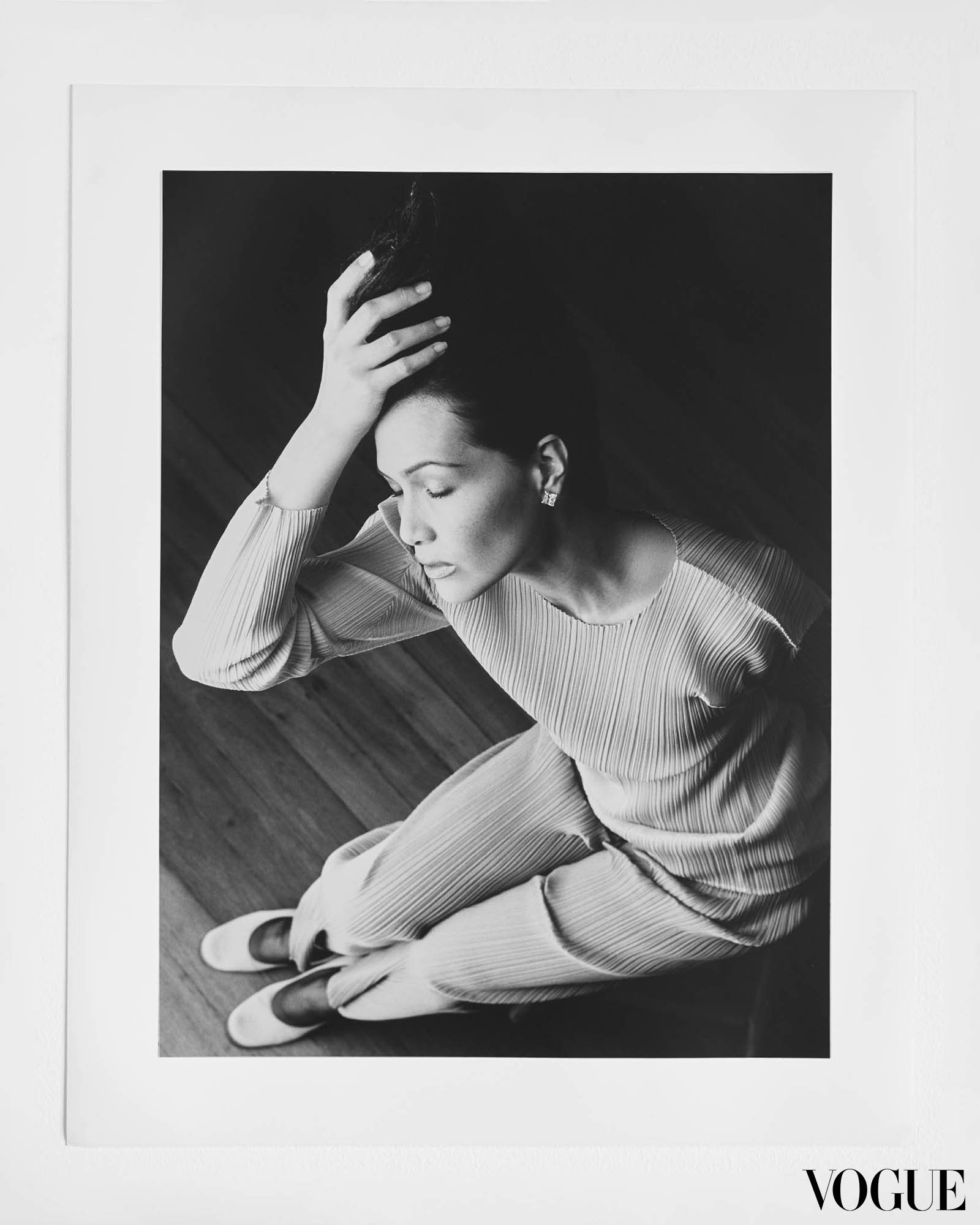
“I just gave birth here,” Tina smiles. “When you’re still young and you give birth to your first, you shrink right away, right?”
Around this time, Tina and Ricco ran another multi-concept store called Mix, which carried the most coveted international brands of the day, from Ann Demeulemeester, Helmut Lang, Cynthia Rowley, Issey Miyake, and more. “It was fabulous at the time.”
“So I’m wearing Issey Miyake from Mix store,” she says, adding that the photos were not like past De Beers campaigns, “But that was the direction of Neal. He said, ‘I don’t want the typical close-up of a model.’”
She continues: “And seeing how big the diamonds are, he wanted to incorporate fashion with De Beers, and that’s basically the result of the shoot. Neal Oshima’s expertise in lighting gave life to the earrings I’m wearing.”

In Tina’s home office, there is a version of this photo with her eyes shut and her hand over her face; it’s still in black and white, but her eye shadow is a fluorescent blue. “Neal has his tricks,” she shrugs, joking about how he hides in his darkroom and then returns with pure magic in his hands.
When this photo was shot, she only remembers herself being like she always was on set: “Just very spontaneous when I do my emotions.”
Tina allows herself a piece of criticism among all the photos in the campaign: “If there is something that I have not mastered, it’s the art of spontaneous softness of fingers. That has always been my pet peeve and my flaw,” she says. “So there is an imperfection there as I perceive it on my own. I only know my own flaws. I never say it, of course, but what the heck? I’m not a model anymore, so I’ll say it to you.”
It was her biggest struggle during her time as a model—the “stiffness” of her fingers. Still, she smiles at the shot. “No one is perfect, right?”
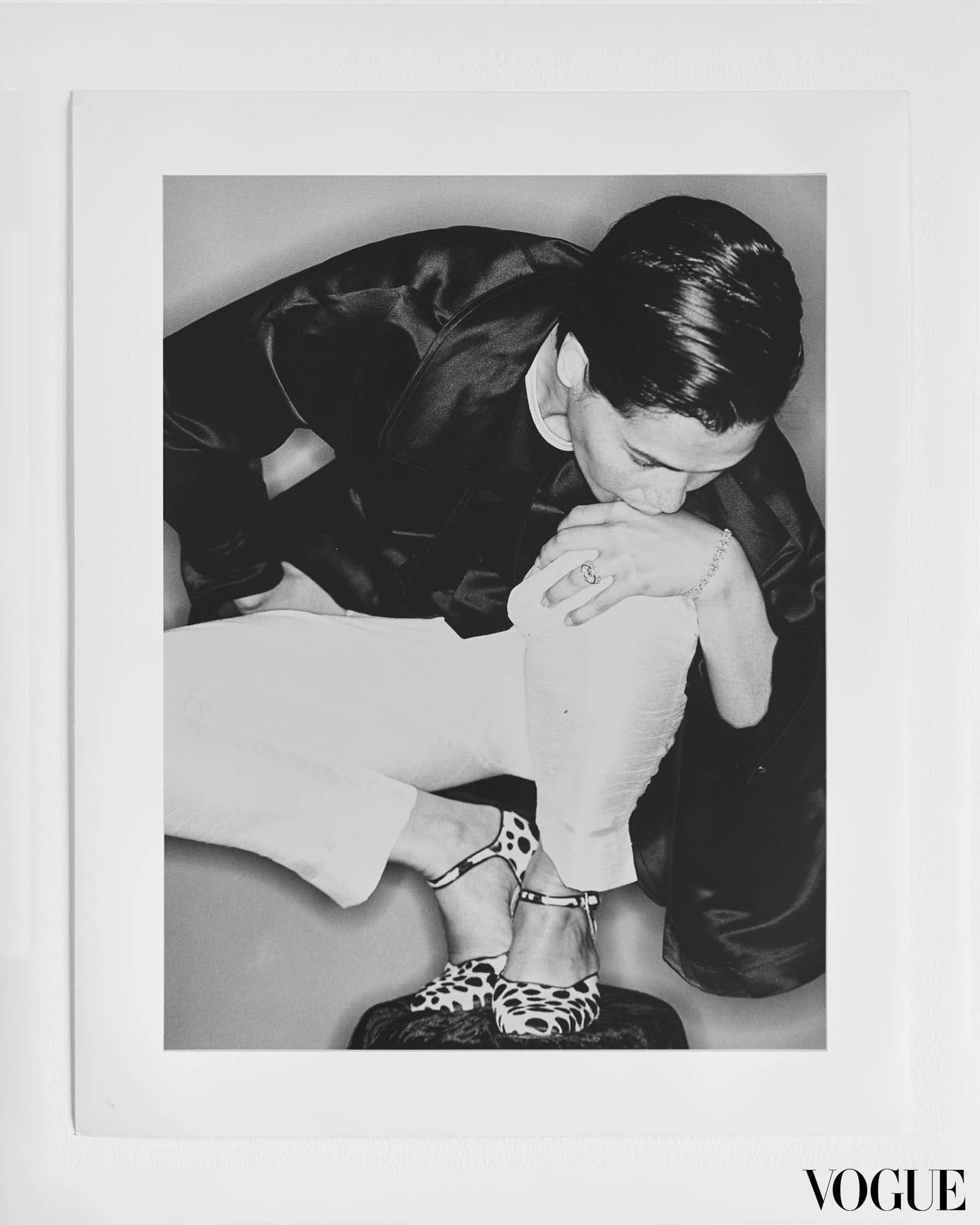
In this image, Tina looks poised, propped up comfortably by her spotted Prada heels. In reality, she was constantly on the verge of falling off of a high stool. Neal wanted to have her whole body in the frame, and at their set, the only way to get the shot was if Tina teetered on the stool, squinting as she tried to keep her balance. “We loved to argue with each other while we were shooting—that’s the funny thing,” she says. “It’s part of that fire. We’re debating, discussing, trying to find a way to make that goal come into fruition.”
For this shot, the goal was to catch the light. Tina explains that Henri “wanted to have that shine on the top of my head. They told me, ‘Just look down, just look down! Don’t ask many questions.’ It’s because they were trying to get that light bounce on my gelled hair, then get that same bounce of light on the diamonds.”
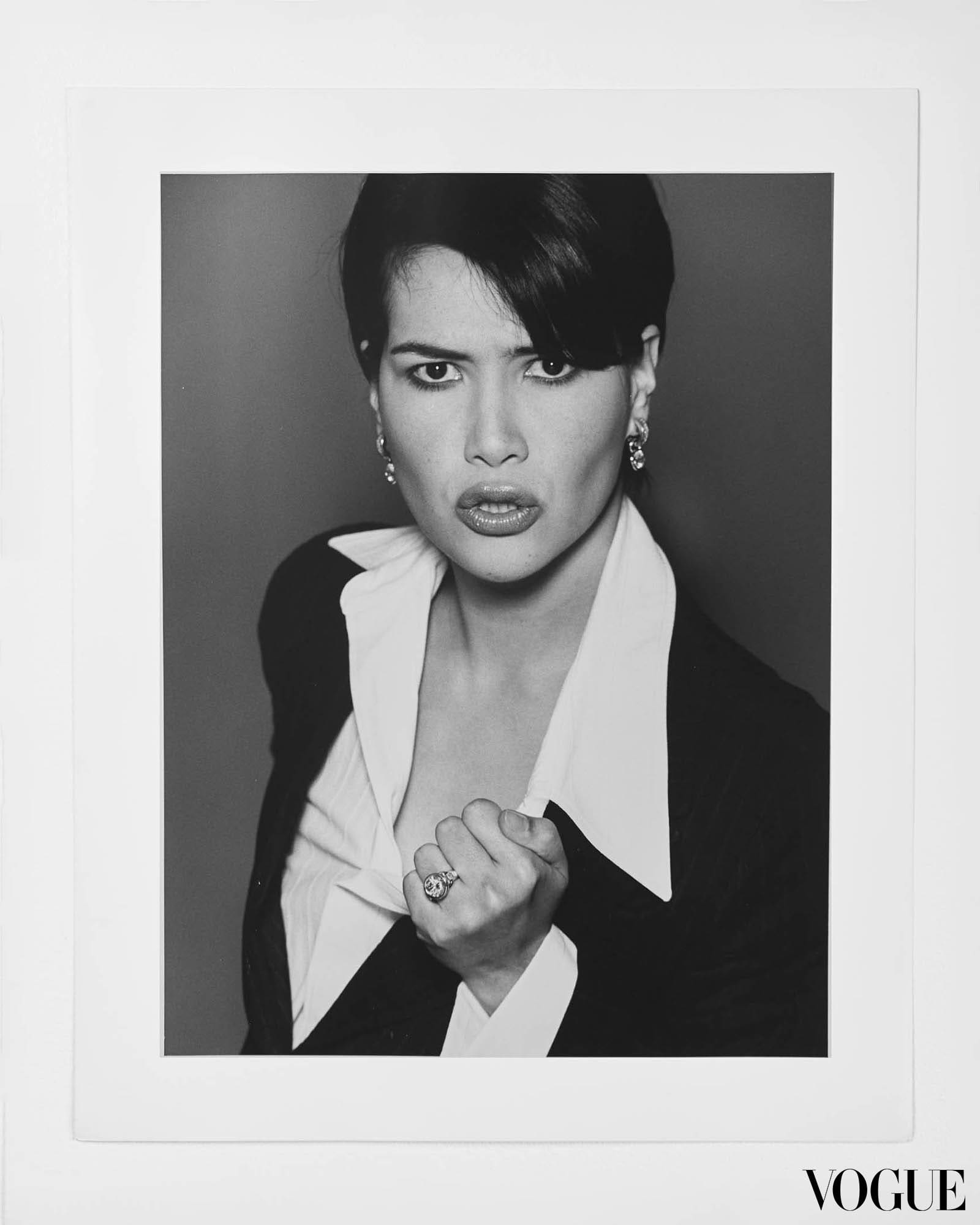
“I am about to fight with my husband, and I am so mad, and he would say, ‘Don’t be sad. Here’s a pair of diamond earrings,’” Tina smiles, then gives a hearty laugh. Her story is all fiction, of course; it’s an example of the types of characters she had to play on set for Neal and for Henri, who “always had a storyline” for her.
“The good thing about Henri is that he has everything in his mind,” she says. “He’d come to me and say, ‘I want you to be a jilted bride! Or I want you to be Joan Crawford from Mommie Dearest.'” The latter is the 1981 horror biopic chronicling the 1920s Hollywood actress Joan Crawford and the strained relationship between her and her daughter. It inspired this photo, capturing Tina’s fist tight and her gaze piercing. In the trio’s “series of moods,” this shot represented rage. “So what was I thinking then [for this image]? ‘Betina!—my eldest—Betina, you keep on stealing my clothes!’” she laughs. “No, I’m just joking. I love Betina so much.”

Much like a handful of fashion editorials shot today, this photo was informed by the music playing on set. That day, Neal, Henri, and Tina opted for Madonna. “Papa, don’t preach! I’m in trouble here. Papa, don’t preach!” she sang over our Zoom call, laughing. Tina says she doesn’t remember much about shooting this photo except for the music playing and the plot Henri wanted her to act out. “The story [for this image] goes, ‘Darling, please! Give me a diamond ring.’”

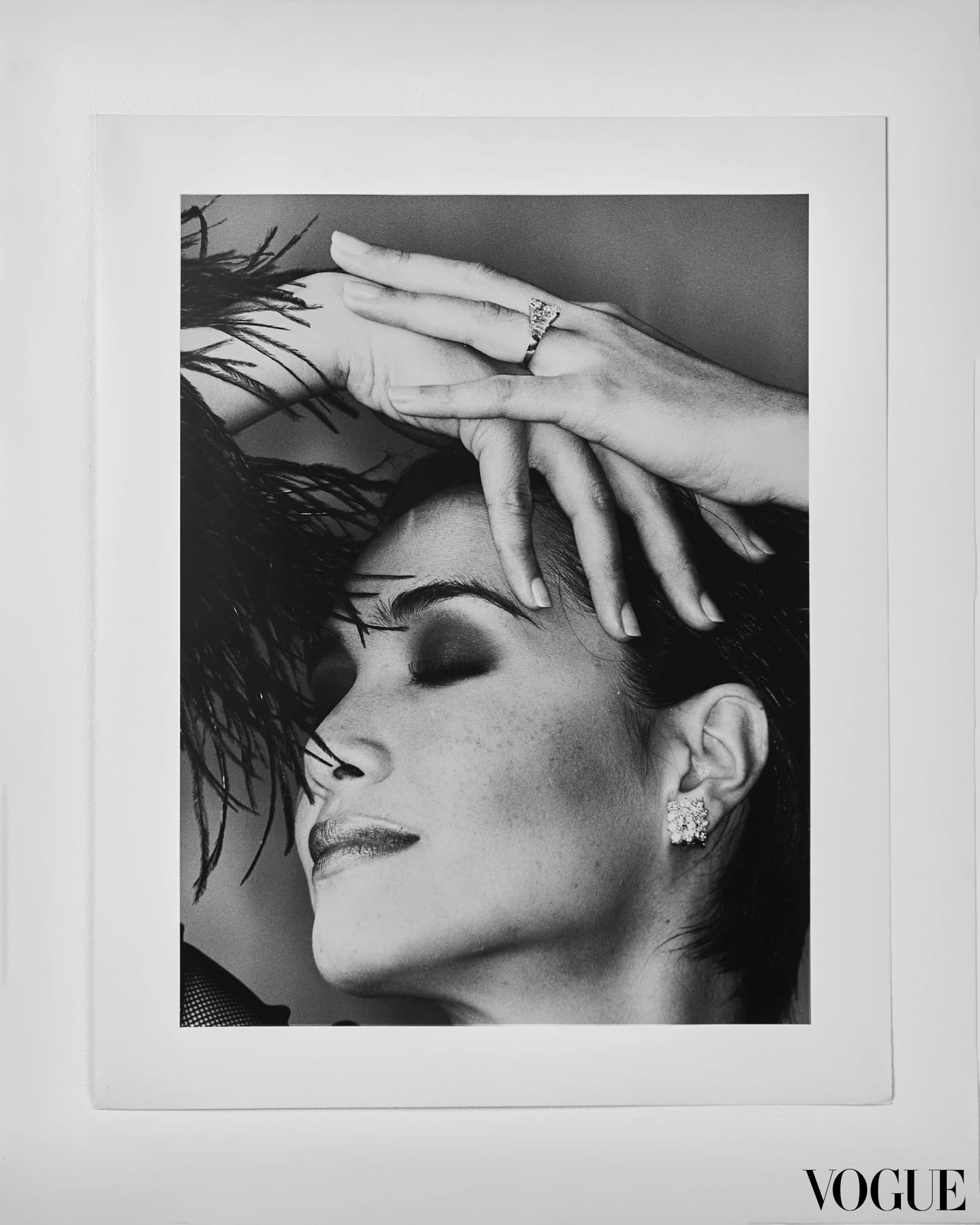
“Oh! This is the glamour look. Henri said, ‘Okay, you had a divorce, or you lost your husband, and you’re mourning, but you’re not,’” Tina says, mimicking her friend’s sing-song tone. “I can still hear his voice. ‘You have to show people that you’re sad, but you have the ring!’”
In these shots, Tina switches from a somber expression to a secretly happy one, using her hands to mask the change. “It’s actually very easy for a model to perfect her craft if somebody is guiding or talking to them,” she explains. “But Neal Oshima does not talk. He likes to argue, so the communication between the three of us is very different because we argue not in front of the camera but [right] before. [By then], we’ve already perfected the script and told the story.”
By the time Tina and Neal became collaborators, she was already confident in her craft, readily posing without needing instruction. Still, Tina says that Neal produced brilliance with whoever he shot with. Behind his quiet demeanor is a photographer who relied solely on himself to achieve his goal composition.
“[At the Vogue Philippines shoot], Henri and I were talking and saying, ‘You know, we miss Neal. It would have been great if the three of us were working today,’” she recalls. “And then we were called to shoot with Borgy [Angeles], and while working with him, we noticed that he was very much like Neal Oshima—he doesn’t talk! He doesn’t say a word, no reaction. He just kept on clicking the camera. And then, after the first shot, Henri and I said, ‘Oh, there you go, Neal is actually here with us.’ We were both laughing.”
She chuckles, adding, “So the fire went on.”
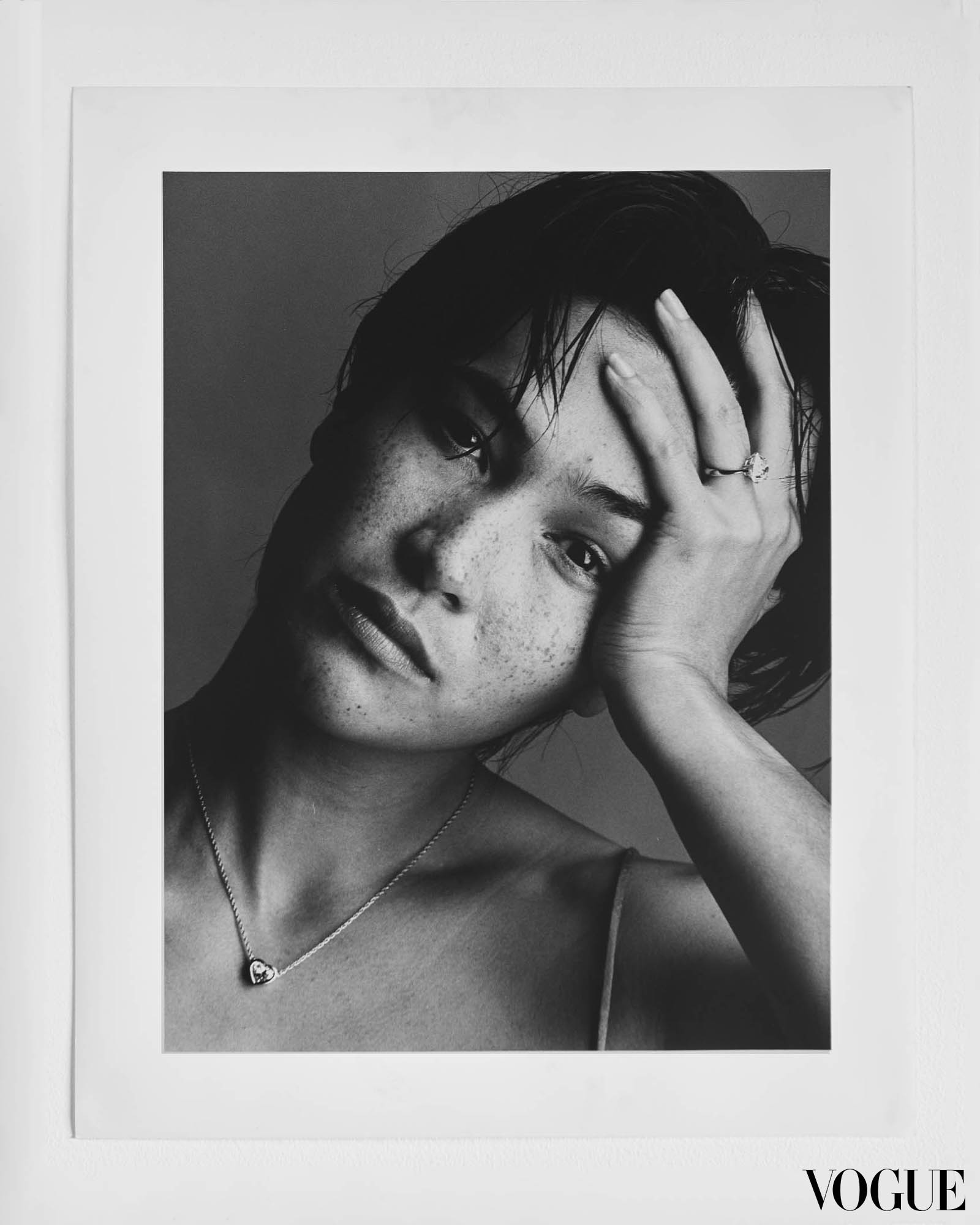
This image is the last in Tina, Henri, and Neal’s “series of moods.” Out of the entire set of photos, this one was “the only photograph that really feels [like] De Beers,” Tina says. Many of their campaigns then featured models posed naturally, diamonds framed by strong emotion. The expression she chose is one that she calls her signature “far-away” look.
This final campaign image was also their last shot of the day. Tina remembers that Neal wanted to shoot a close-up to showcase the diamonds, so Henri instructed her to remove her makeup and style her hair as naturally as possible. “Neal has so much respect for Henri that whatever Henri says, Henri gets,” she smiles. “There’s zero [makeup because] they wanted to show my freckles and the diamonds. So that’s the concept: freckles and diamonds go together.”
That was always their process: If one person had an idea, another would build on it until they captured an image that felt right. “It’s an incredible team because each one of us has our expertise, I guess. So Neal would capture it and give life to the concept, Henri would create [that concept] from scratch, and I am the one that [would] execute it,” she explains. “In that process, we’re able to see if we’re doing a great job or not.”
Despite the long shoot day, Tina admits that all the work put into every image was worth it. “You know what? At the end of every shoot that we have—the three of us—I don’t get tired. I don’t regret. I can’t sleep at night because I already know it’s going to be a beautiful series of photos. That’s what art is all about,” she says. “When you talk about art, it’s not just the end product. It is always the process.”
